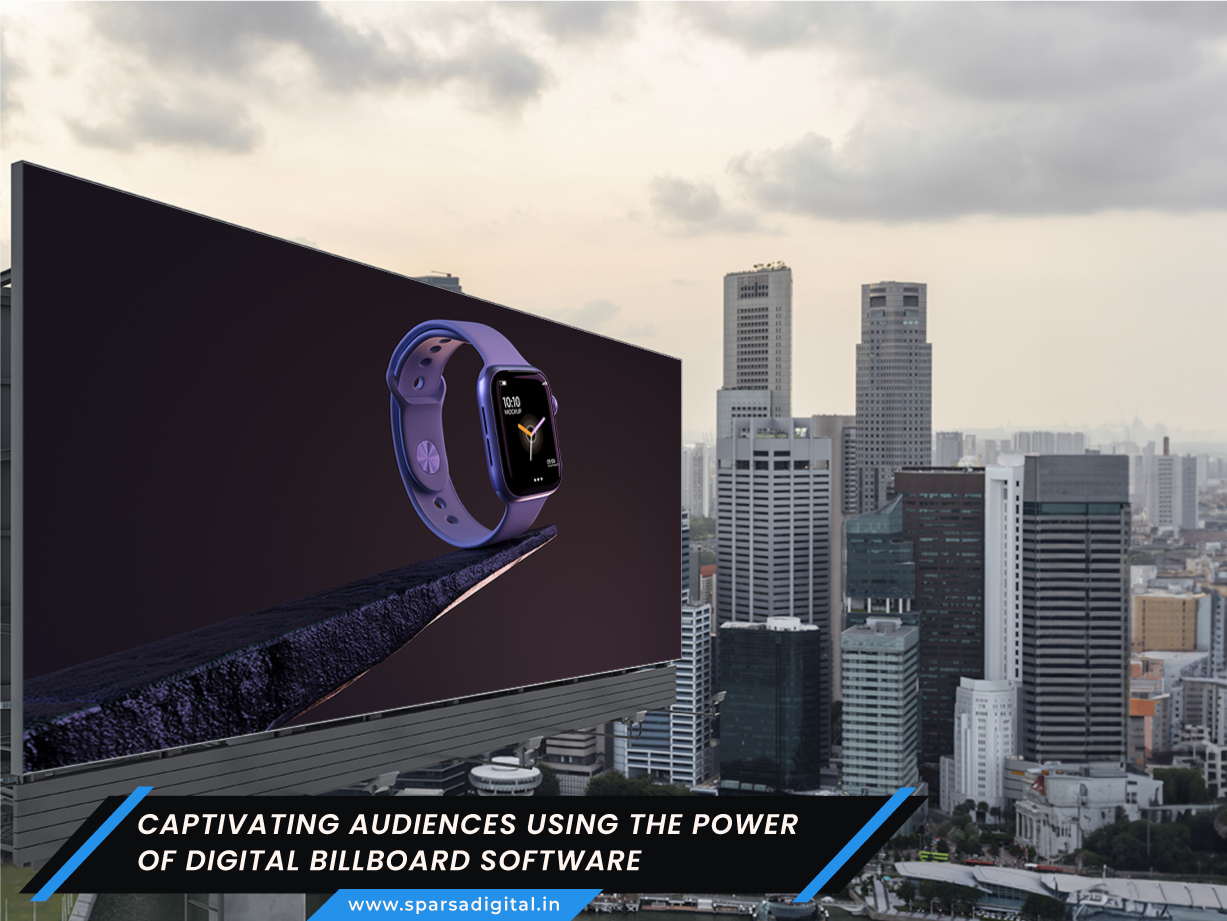Captivating Audiences Using the Power of Digital Menu Boards and Digital Billboard Software
In the digital age, static menu boards and billboards are being replaced by dynamic and interactive solutions. Digital menu boards and digital billboard software have emerged as powerful tools for businesses to captivate audiences with appealing content. In this blog post, we will delve into the functionalities and benefits of digital menu boards and digital billboard software. Also, their impact on advertising and customer experiences, and how they are transforming traditional signage into dynamic marketing platforms.
Digital Billboard Software: Transforming Advertising
A. Dynamic and Engaging Content
- Eye-Catching Visuals: Digital billboards offer high-resolution displays and the ability to showcase vivid imagery, videos, and animations, grabbing the attention of passersby.
- Targeted Advertising: With digital billboard software, businesses can deliver tailored messages to specific audiences, adjusting content based on factors. This includes things such as time of day, weather conditions, or demographics.
B. Real-Time Updates and Flexibility
- Instant Content Changes: Unlike traditional billboards, digital billboard software allows businesses to make real-time updates to their advertisements, ensuring relevant and up-to-date messaging.
- Campaign Scheduling: Businesses can plan and schedule different advertisements or messages to be displayed at specific times or during specific events, optimizing exposure and impact.
C. Cost-Effectiveness and Measurement
- Cost Savings: Digital billboards eliminate the expenses associated installing static billboards, making it a more cost-effective advertising solution in the long run.
- Performance Metrics: Digital billboard software provides businesses with valuable analytics, including impressions, engagement rates, and audience demographics. This allows more accurate measurement of advertising effectiveness.
- A/B Testing: Businesses can experiment with different creatives, messages, or calls-to-action on digital billboards, gathering data on audience responses. Also, refine their advertising strategies accordingly.
Digital Menu Boards: Elevating the Dining Experience
A. Dynamic Content Delivery
- Visual Appeal: Digital menu boards offer vibrant displays, high-definition imagery, and dynamic animations capturing customers’ attention and create an immersive dining experience.
- Real-Time Updates: Businesses can easily update menus, pricing, promotions, and nutritional information across multiple locations simultaneously, ensuring consistency and accuracy.
- Scheduled Content: With digital menu boards, businesses can schedule content changes based on the time of day or specific promotions. This allows for targeted messaging and optimized customer engagement.
B. Increased Flexibility and Customization
- Menu Engineering: Digital menu boards enable businesses to strategically highlight high-margin items, promote limited-time offers, and dynamically adjust prices to maximize profitability.
- Personalized Recommendations: By integrating customer data and preferences, businesses can offer tailored suggestions and promotions based on individual ordering patterns. It enhances customer satisfaction and upselling opportunities.
C. Operational Efficiency and Cost Savings
- Streamlined Updates: Digital menu boards eliminate the need for manual printing and distribution of paper menus, reducing costs, and saving time.
- Remote Management: Businesses can centrally manage and control content across multiple locations, ensuring consistency and reducing the need for on-site maintenance.
- Real-Time Analytics: Digital menu boards provide valuable insights into customer interactions. This allows businesses to analyze menu performance, make data-driven decisions, and optimize their offerings.
Enhancing Customer Engagement and Experience
A. Interactive Features
- Touchscreen Capabilities: Digital menu boards and billboards can be equipped with touch-sensitive technology, enabling interactive experiences and providing customers with additional information.
- Wayfinding and Directions: Digital billboards in public spaces or transportation hubs can offer interactive maps and directions, helping customers navigate their surroundings effortlessly.
B. Entertaining and Informative Content
- Engaging Videos and Animations: Digital menu boards can incorporate captivating videos, animated graphics, and entertaining content that resonates with customers, creating memorable brand experiences.
- Real-Time Information: Businesses can leverage digital signage to display live news updates, social media feeds, or notifications, keeping customers informed and engaged.
C. Personalized Offers and Loyalty Programs
- Customer Recognition: By integrating with loyalty programs, digital menu boards can recognize individual customers and display personalized offers, rewards, or recommendations.
- Targeted Promotions: Digital billboards can utilize geolocation data to deliver location-specific offers or promotions, enticing customers to visit nearby stores or restaurants.
Conclusion
Digital menu boards and digital billboard software have revolutionized traditional signage, offering businesses enhanced flexibility, customization, and captivating visual experiences. These dynamic solutions enable real-time updates, targeted advertising, and interactive engagement, transforming the way customers interact with brands. By leveraging digital billboard software, businesses can elevate the dining experience, optimize advertising campaigns, and create connections with their audiences. As technology continues to advance, the potential for more immersive and engaging digital signage experiences will only continue to grow.

